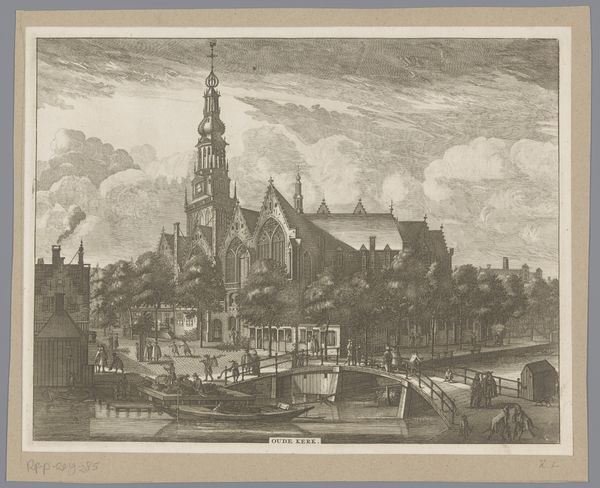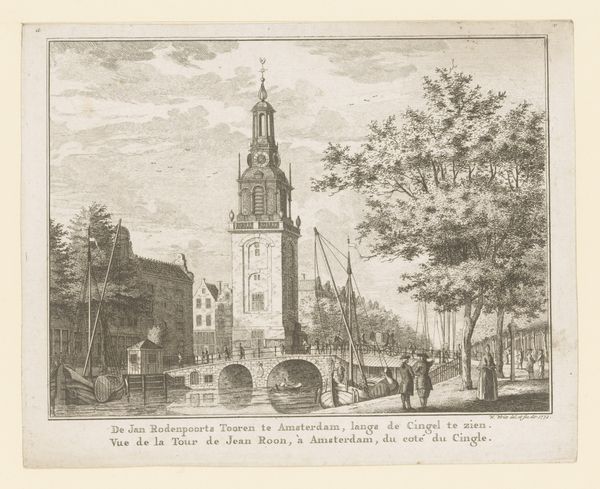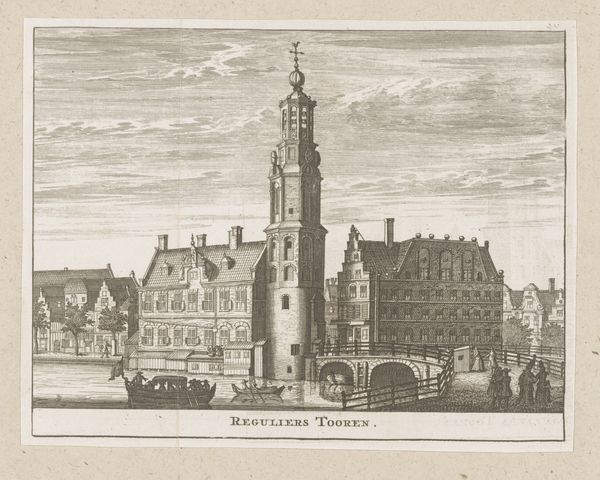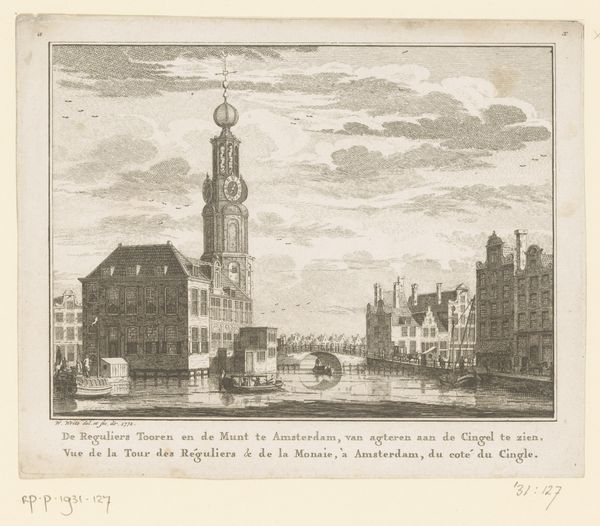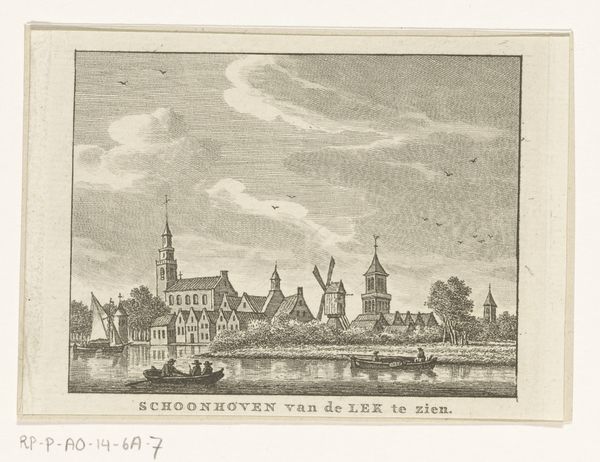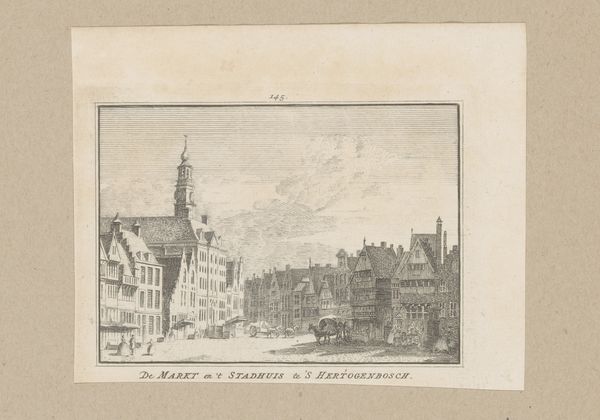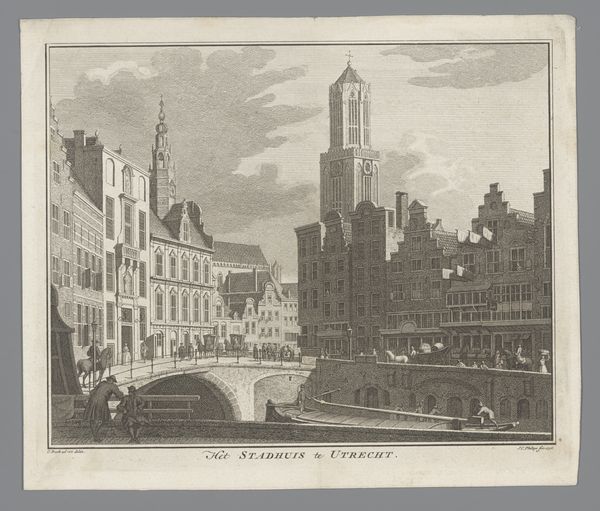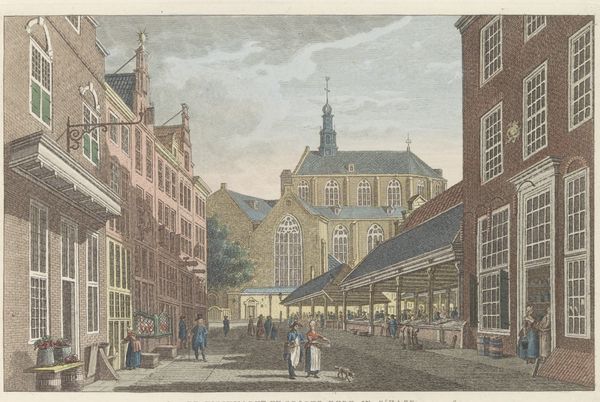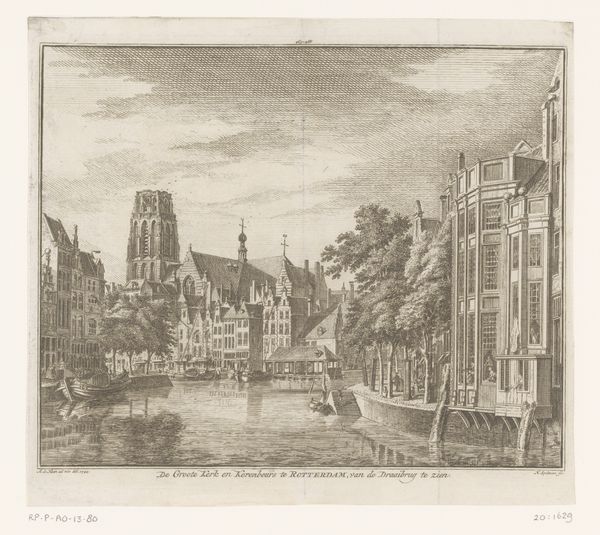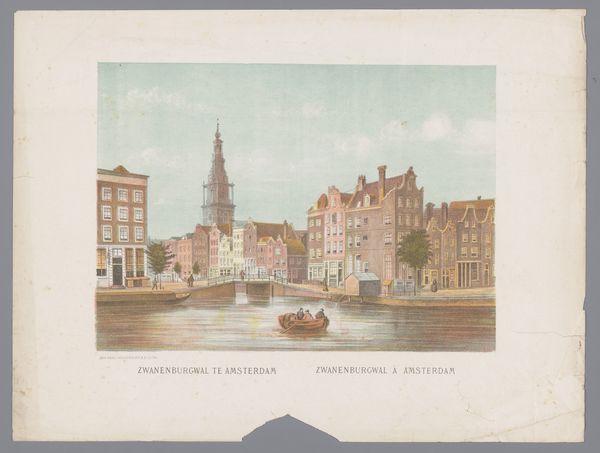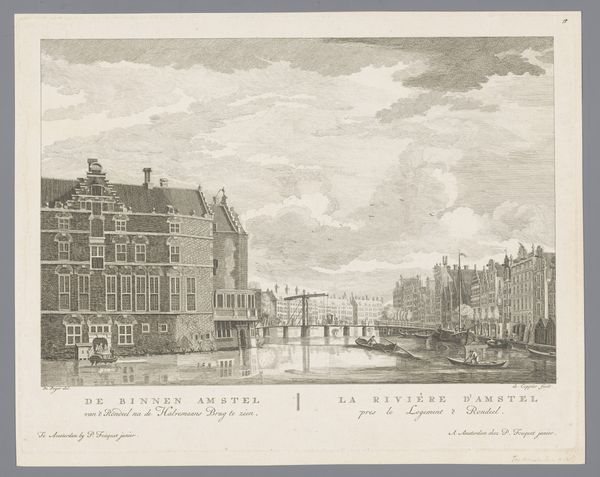
print, engraving
#
neoclacissism
# print
#
cityscape
#
engraving
Dimensions: height 81 mm, width 103 mm
Copyright: Rijks Museum: Open Domain
Editor: This engraving, "Gezicht op de Westerkerk te Amsterdam," made sometime between 1786 and 1792 by Carel Frederik Bendorp, captures a scene of daily life with the Westerkerk as its majestic backdrop. The meticulous detail and clear lines evoke a sense of order. How can we view this artwork through its historical and societal lens? Curator: Considering Bendorp’s focus on the Westerkerk and its surroundings, we should analyze what role this type of imagery served in the late 18th century. Amsterdam was a major commercial hub, and the church signified stability and faith amid rapid social change. How do you think the artist uses perspective to communicate social hierarchy or community structure? Editor: It’s interesting how the church, so dominant vertically, oversees the ordinary activities of people on the bridge and the boat on the canal. So, perhaps the towering presence reinforces the influence of the church within the Amsterdam society? Curator: Exactly. And notice how Bendorp’s neoclassical style, evident in the crisp lines and balanced composition, embodies Enlightenment ideals. This period favored reason, order, and a return to classical forms. Do you see how this print might serve a didactic purpose beyond simple documentation? Editor: It might. By presenting Amsterdam with such clarity and order, was Bendorp promoting a vision of his city as progressive, prosperous, and virtuous? Curator: Precisely. Also, consider where prints like this would circulate - often in print rooms of wealthy merchants and civic leaders. This suggests it served to affirm their own values and celebrate the city they helped to build and govern. It reinforces a specific image of Amsterdam society. Editor: I never would have considered the target audience so directly influencing the artwork itself. It really does provide another lens through which to examine art. Thank you. Curator: And I've been reminded of how deeply intertwined art is with the prevailing political and economic forces. Always consider the who, the what, and especially, the why of a work.
Comments
No comments
Be the first to comment and join the conversation on the ultimate creative platform.
